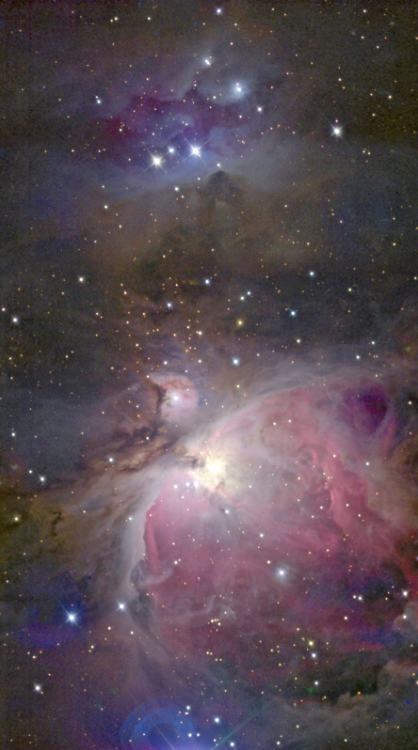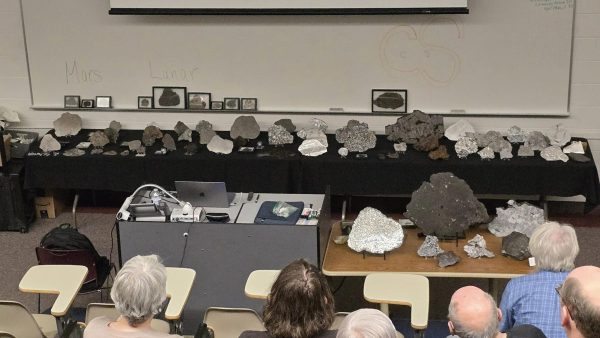Observatory Corner: Nebulae
This is a mosaic of the Orion Nebula on the bottom and the Running Man Nebula on the top. “Nebula” is the Latin word for cloud or fog, sums up what we’re looking at. A nebula is a sparse cloud of gas or dust. There are three main types of nebulae, all of which can be seen in this image. The appearance of gas nebulae depends on their compositions, whereas that of dust nebulae depends on their positions relative to stars.
1) If a dust nebula lies behind a star, it will scatter and reflect the blue light from the star towards us. These are called reflection nebulae. Much of the Running Man Nebula is composed of reflection nebulae.
2) However, if a dusty region is between us and a star, it will either obscure the star or it will make the star look red. These are called absorption nebulae or dark nebulae and are dark reddish brown in appearance. They can be seen at the bottom of the Running Man Nebula and at the top left of the Orion Nebula. The denser regions also tend to be locations of active star birth.
3) If a gas nebula is close to a hot star, the ultraviolet light from the star will cause the cloud to shine. The atoms are excited or ionized and as they settle down, they emit light of very specific colors. For example, oxygen looks greenish blue and hydrogen appears red. Since hydrogen is the most common element in the universe, many nebulae appear red, like the Orion Nebula. These are called emission nebulae.
For more on nebulae, star birth, and other bizarre features of our lovely universe check out the Calvin Observatory webpage at http://www.calvin.edu/academic/phys/observatory/. If you want to visit the Calvin observatory on top of the science building, our hours are from 7:30 p.m. to 11 p.m. Mondays through Thursdays (weather permitting). More directions can be found on our website.







